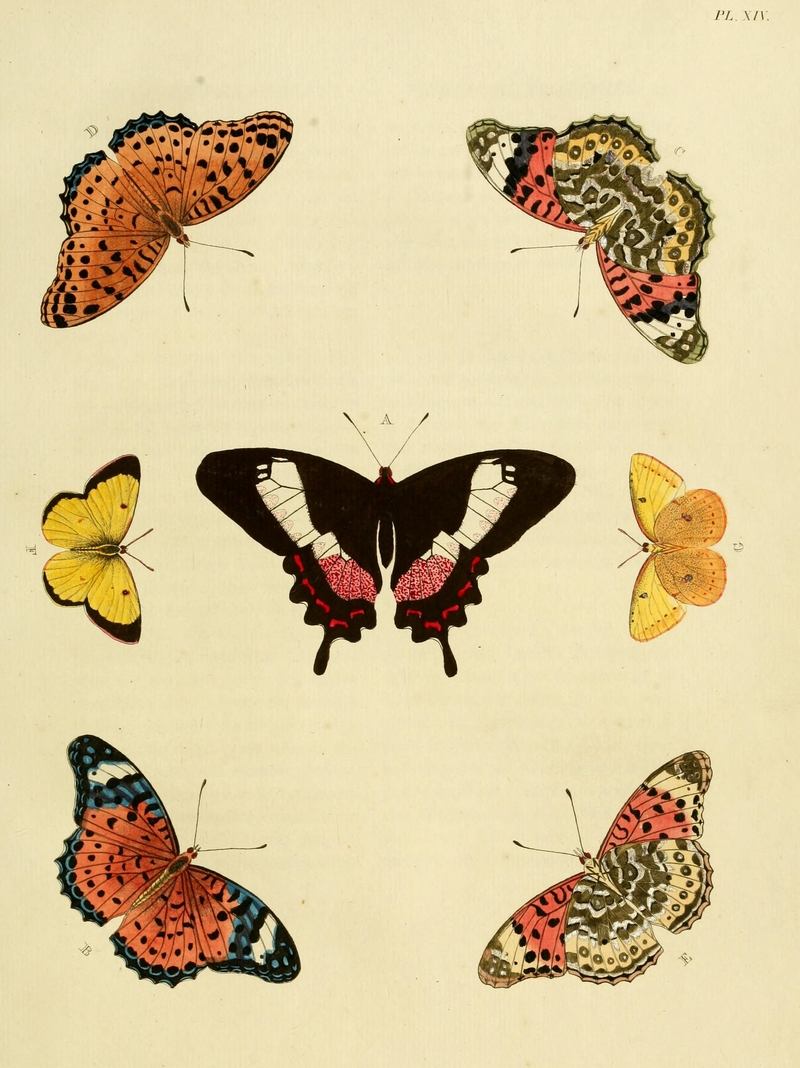Fluminense swallowtail (Parides ascanius), Indian fritillary (Argynnis hyperbius), moorland clouded yellow (Colias palaeno) Description
Plate XIV
A "(Papilio) Ascanius" ( = Parides ascanius ) Iconotype? = Fluminense swallowtail (Parides ascanius)
B, C (male), D, E (female): "(Papilio) Niphe" ( = Argynnis hyperbius or Argyreus hyperbius) = Indian fritillary (Argynnis hyperbius)
F, G: "(Papilio) Palaeno" ( = Colias palaeno ) = moorland clouded yellow (Colias palaeno)
Date 1779
Source "De uitlandsche kapellen: voorkomende in de drie waereld-deelen Asia, Africa en America = Papillons exotiques des trois parties du monde, l'Asie, l'Afrique et l'Amérique"
Author Pieter Cramer (1721 - 1776) and Caspar Stoll (between 1725 and 1730 - 1791)
Source: https://commons.wikimedia.org/wiki/File:Cramer%26Stoll-uitlandsche_kapellen_vol._1-_plate_014.jpg
Parides ascanius, the Fluminense swallowtail, is a species of butterfly in the family Papilionidae. It is endemic to Brazil.
Argynnis hyperbius, the Indian fritillary, is a butterfly of the nymphalid or brush-footed butterfly family. The Himalayas, in the outer ranges from Campbellpur in the Punjab to Sikhim; Oudh; Agra; Manbhum in Bengal; Assam, the Khasi Hills; Upper Burma; extending to China and Formosa; Sumatra; Java. Can also be found in southern Japan.
Colias palaeno, known by the common names moorland clouded yellow, palaeno sulphur, and pale Arctic clouded yellow, is a Holarctic butterfly in the family Pieridae. As most Colias-species, it is an avid flyer. Though the species is normally restricted to the habitats, occasionally it is found far from suitable breeding grounds. The larva is found on bog bilberry (Vaccinium uliginosum).
